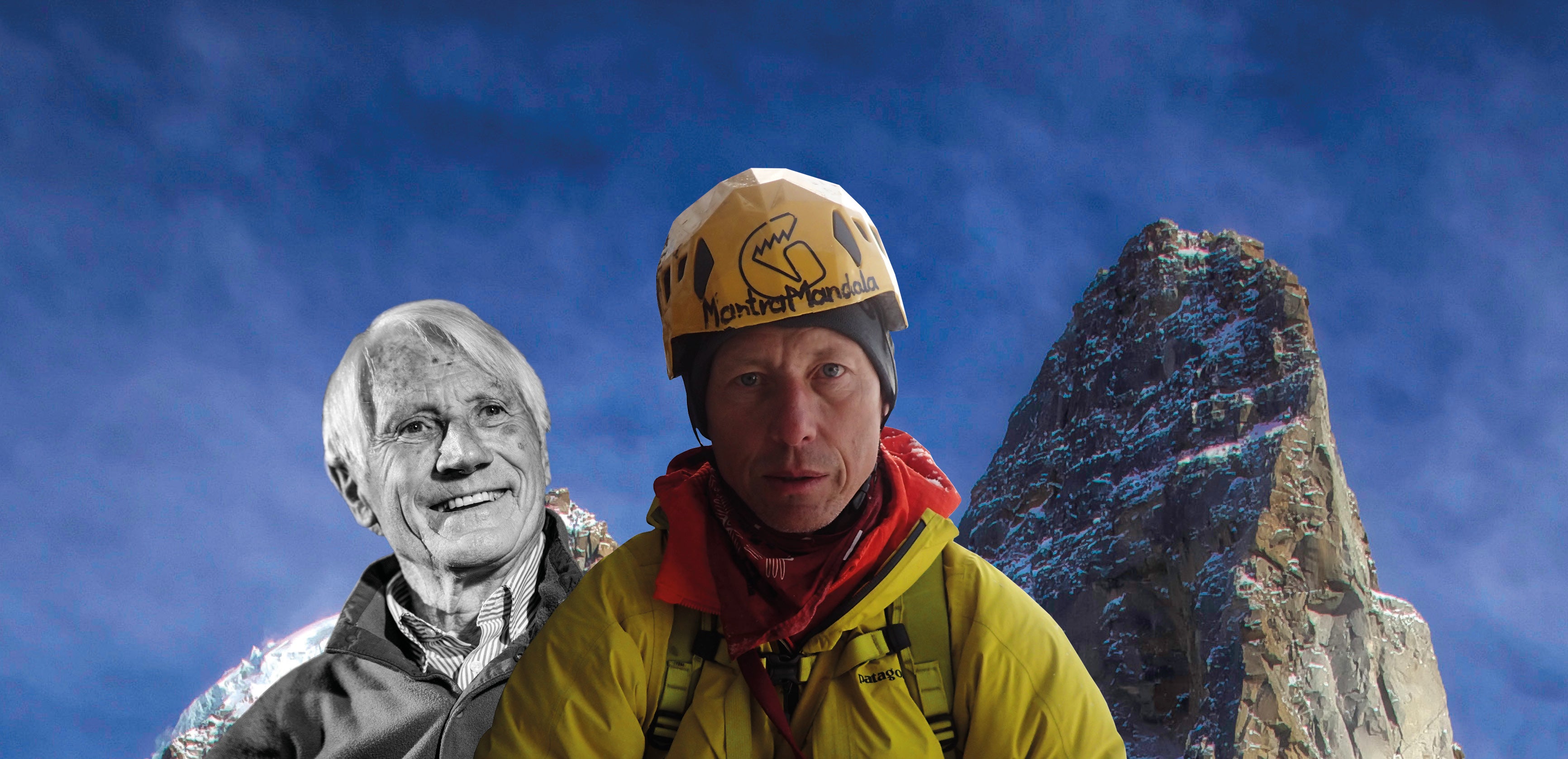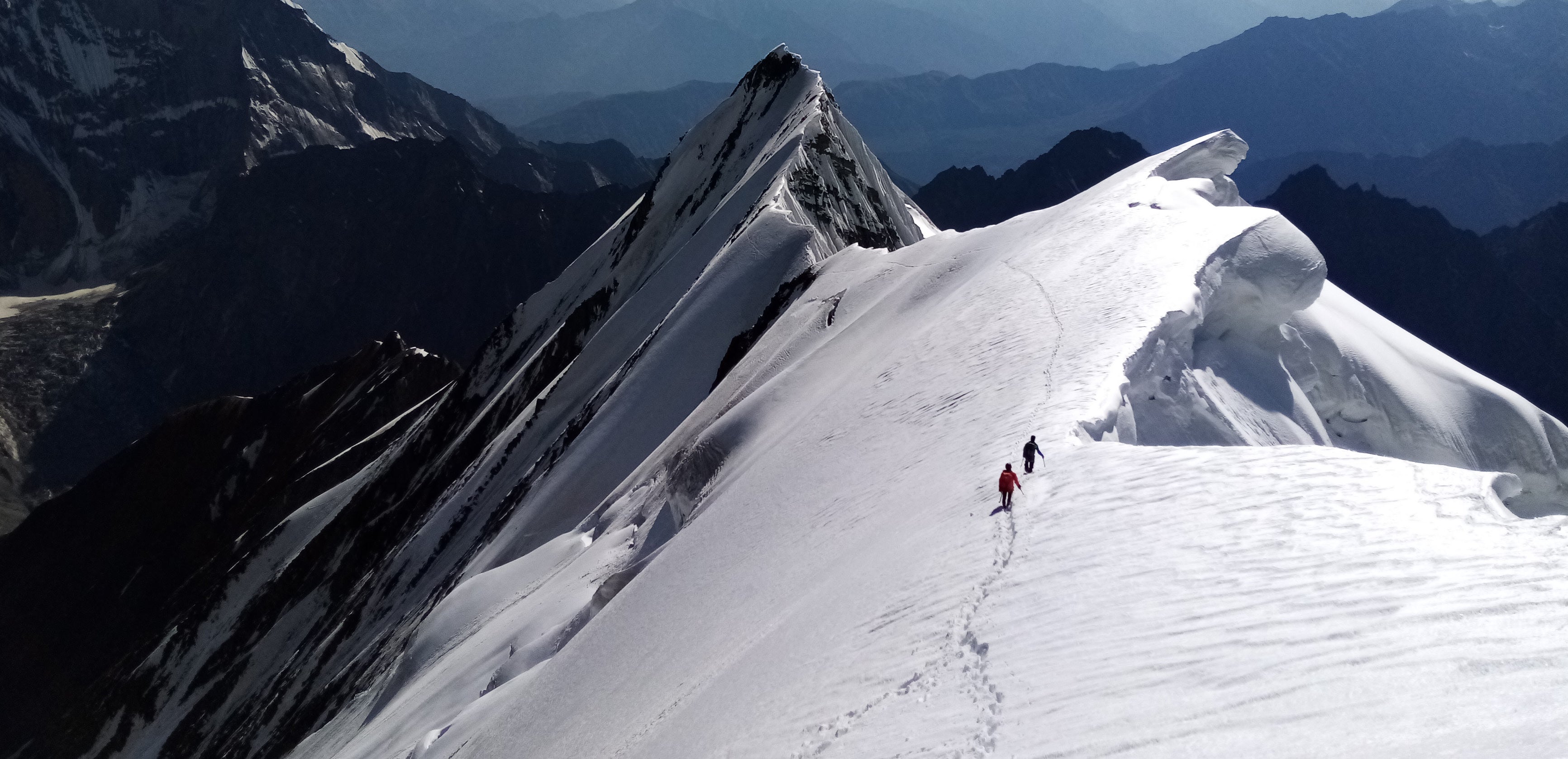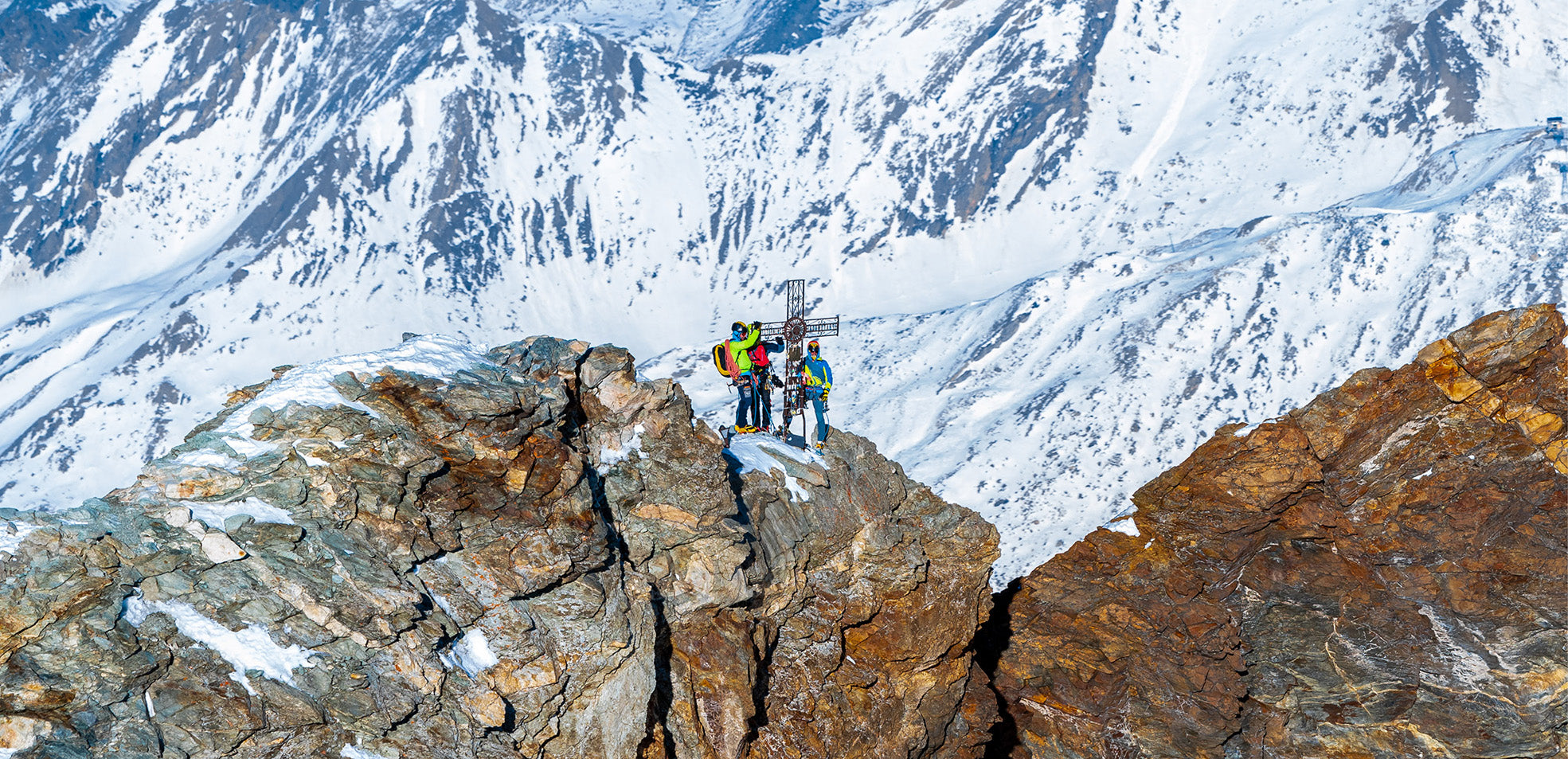
Story of a stolen book: how Bonatti changed my life by Marek Raganowicz
Published on 2022/08/02
The story dedicated to Walter Bonatti and his mountaineering and literary legacy starts from an event, duly fictionalized, which has as its background the Poland of the 80s and the living conditions in a country beyond the Iron Curtain and where even alone finding information or being able to get close to "the sources" could be a problem. Going to loot or shoplift a library, an act in itself more than execrable, could at the time be a last resort for those who craved knowledge, or even one of the various gestures of impatience and silent rebellion against the regime by a historically indomitable population and unwilling to have leadership figures that were not their own. Marek Regan Raganowicz grew up in that culture and society, and in his stories he loves so much to refer to the period of his growth and the beloved contradictions of his revered homeland.
Translation from Polish and editing by Luca Calvi

The librarian's gaze showed no interest in what I was doing on the shelves. I was free to wander through cookery books, fantastic robot tales, talking cats, or dancing beans. I paused and looked unwillingly at biographies of criminals, fallen dreamers, and a special shelf with biographies of prominent Communists who had changed the world for the worse. In reality, I was not interested in any of those subjects and in the end I went to the shelf that at the beginning had the words "Mountain Literature". In order not to get caught, I took the weighty treatise "Lenin on the Tatras" and, feigning interest, leafed through a few pages. The librarian looked up from the book to which she was pasting some yellow pages with annotations and when I saw her lower her eyes again I immediately reached the book I had chosen and hid it in a thousandth of a second under my jacket, pretending to continue reading the adventures of Lenin. The book I held in my chest burned like a red-hot brick. I felt that I was sweating and that I had to get out. So I ran out of the library or rather from the crime scene and didn't stop until I got home.

That was how I stole a copy of Walter Bonatti's “My Mountains”, a book that hadn't been reprinted for years and was impossible to find in antique shops. I couldn't imagine living without being able to consult it whenever I wanted, so that book in a sense was mine and it was there waiting for me. I had to have it, just like you have to have a map of a city when you want to get to your destination and not get lost in dead ends. I had read “My Mountains” several times before deciding to steal it. He had shown me a climbing style that I hadn't known before: solitary, personal, even intimate. To this day I have not confessed to that theft and probably never will, but looking back I can see that I somehow did everything to try to atone for that transgression. I felt his fire both as a burning remorse and as a challenge or obligation to pay off a debt. I felt guilty for depriving others of the opportunity to commune with “My Mountains” and to draw inspiration from them. I wanted to give something of myself and share it like Walter did.
Some books bring back to the past, tell stories that the authors want to come up with themselves at any cost, without thinking too much about the reader. Sometimes I have the impression that I too offer these kinds of stories, told, as it were, for my own purification, stories that are perhaps useless to the readers.
Other books, then, strike the soul and lead to a life in the author's world. They leave you breathless, but they also force you to break away and live your own life, to follow your own path, the research of which is a separate challenge inspired by the author. “My Mountains” shook me and forced me to face the mystery of the future, the unknown, adventure and risk. It opened my eyes to the road that I then wanted to follow with unbridled curiosity and wild passion.

What fascinated me, first of all, was the description of the mountain, of its soaring shape as in a fairy tale populated by brave climbers and insurmountable, impressive, wild and unpredictable walls. I liked how, in the opening passages of the chapter, Walter paid homage to the first conquerors of the summit itself, as well as to the authors of the routes on the north and west faces. This made me see him as a man alien to the categories of ferocious rivalry fueled by the desire to promote his own ego. He had described his obsession and his attempts to climb the South Pillar, once with Mauri and two years later, returning from a traumatic expedition to conquer K2, this time with a team of four, with his previous partner plus Oggioni and Aiazzi. Unfortunately, time and difficulties had forced them back from the face.

Reading this story of failed attempts that lead to victory, I would have expected to see someone special appear, as happens in fairy tales, when the hero loses his enthusiasm and faith and suddenly someone arrives who rekindles the flame of battle and leads to the victory. To my surprise, on page 100, after going to the new paragraph, I read instead that passage that I would have repeated many times later and that would keep coming back to me during my years of solo climbing and which went something like this:
“Finally there was a turning point. One day, like a crazy idea born of mental depression, I was seized by the thought of going back to the Drus, this time alone, to prove to myself that I was not a finished man.
Days passed and what I had called a crazy idea gradually turned into a ray of hope and faith. Soon I found myself living only with the thought of making a solo ascent on the Drus ".

Thus I understood that the real challenge of a face does not lie in putting together a bigger team, better partners or using more sophisticated or invasive equipment; instead it is a matter of mind, attitude, determination and understanding of the fact that the walls and routes are written in us waiting for the moment when we are ready to face them. There is nothing of that hostility, those battles or hatred that often lead us to compare climbing to an action of war. The key is given by awareness, inner strength and purity of style. I wanted to do this kind of climbing and I deeply believed that this would be my road in the mountains.
Only today do I understand that for a long time my subsequent climbs were a series of references to the style of the solo ascent of the southwest pillar of the Drus and to small stories of that ascent.

However, I had started going to the mountains 30 years after Bonatti's greatest successes, so I also found myself forced to open my eyes to the changes in ethics and accept the relaxation of those rules that the Maestro had committed to respecting. Describing the solitary climb on the Drus, he explained that drilling the rock meant killing the concept of "impossible" and thus undermining the meaning of mountaineering. Although I agreed with the idea and its subsequent elaboration in Messner's famous article "The Assassination of the Impossible", I couldn't help but repeat the bolted routes and be fascinated by the exploits of the masters of the New Wave of aid climbing in Yosemite. When I then began to repeat their extreme aid routes, I realized how much determination, paid for with the maximum risk, they must have to minimize drilling. Thus, in essence, they had maintained respect for Bonatti's principle according to which the meaning of mountaineering lies in maintaining a balance between the use of invasive equipment and the strength of the mind.

Every time I climb El Capitan Bonatti comes to mind, and not only for his rigorous ethics, but also for my favorite passage in which he describes the dramatic moments in which he had to throw away some food soaked in gasoline: "All that I had two packets of biscuits left, a tube of condensed milk, four cheeses, a can of tuna, a can of pate, some sugar and dried fruit, a flask of cognac and two cans of beer. " It was these last two products that caught my attention and broke my monolithic image of the Grand Master, who in his severity of principles rejects the temptations of stimulants. Anyone who knows me knows that I'm not a huge fan of alcoholic beverages, but every time I climb El Capitan, following the example of the Maestro and cultivating his memory, I always have two cans of beer with me.

When I was reading books on climbing, in the 1980s, the Poles were starting the era of the first winter ascents of eight-thousanders. The big first was the ascent of Everest, which was widely covered in the media and talked about in local climbing clubs. At that time I was just starting my journey to the mountains and I was wondering which way to go. I had taken a look at Himalayan climbing, but I felt much more attracted to the large rock faces climbed in small ropes. Of course, the smiling faces of those who reach the top of the Himalayan peaks are inspiring and tempting, but after reading “My Mountains” I understood that sometimes behind those smiles there were experiences similar to that lived by Bonatti on K2, full of disillusions, disappointment or obvious selfishness such as to undermine trust in collaboration between comrades. I didn't have the slightest intention of doing that kind of experience in the mountains and so I decided to stay away from expeditions with many participants under the banners of state associated with noble slogans seasoned with martial rhetoric. In the chapter on K2 I had found a description of despair and the struggle for life dictated by the dangerous selfishness of the comrades. I thought that after such an experience Bonatti would never return to the Himalayas, but I was wrong. In fact he went there again, but this time with a change of style. With a smaller team he went to climb the Mountain of Light, Gasherbrum IV, together with Carlo Mauri, completing a climb that could certainly be considered today as one of the first alpine style ascents in the high mountains.
The last chapter of the book, which recounts the tragic events of the Freney Pillar, leaves the reader faced with the big question of whether or not to continue climbing. After having experienced the death of four companions, anyone would think of giving up everything, but the Author, while continuing to climb, is careful not to give any indication on which could be the right or wrong way to follow. The reader himself must be the answer to the fundamental questions on the meaning of risk and climbing. Walter, after the Freney tragedy, continued to climb, which for me, a young reader at the beginning of his career, was something obvious, so much so that I imagined that if I had been in his shoes I would have made a similar decision. Less than 10 years later, with my personal experiences behind me, I had already realized that solving these issues is much more difficult than I thought when I read that book.

A few years after reading “My Mountains” for the first time, I received news that Walter had abandoned competitive climbing. This was many years after the fact, but in those days the information from behind the Iron Curtain arrived in Poland with a considerable delay. I read that after having established a new solo route on the north face of the Matterhorn in winter Bonatti had retired. I had never gotten to know the description of this last climb, so I imagined him descending from the summit after a frightening effort, walking to the Zermatt station, taking the train down to the valley and leaving everything behind completely anonymously to blend in with the crowd of tourists who didn't have the slightest idea of his enterprise. Who knows, maybe while he was still in town or somewhere under the walls maybe he had left his backpack. I imagined that canvas bag of him, similar to so many others, which became unique for having been left there by Bonatti, waiting for someone to pick it up and continue along that path.
Certainly his last ascent was a feat that surpassed all the achievements of an entire generation and even today it is possible to consider that of the 35-year-old mountaineer from Bergamo as one of the most exceptional feats of mountaineering in its entirety, not just the solitary one. At the height of his fame, he managed to say “enough!”, dedicating himself to journalism, writing and exploration trips.

SHORT BIO
Born in 1961 in Szczecin (Stettin), Poland, at the foot of the Tatra Mountains and grown as a mountaineer in the Alps and the Himalayas, he discovered his true passions, climbing alone and on big walls, in Yosemite Valley. Fascinated by climbing in all its aspects and faithful to his ideal of clean climbing (no pegs, no bolts, no support from other people, etc.), among his ascents the ones who stand out most are the first solo of Secret of Silence (VI / A4), north side of Ship's Prow, Baffin Island, Canada; the first solo of MantraMandala (VI / A3 +), eastern side of Ship's Prow; the first winter solo of SG Harryland (6 / A3), Troll Wall, Romsdal, Norway; the solo of Plastic Surgery Disaster (A5 / 5.9), El Capitan, Yosemite, California; the first of Katharsis (VI / A4 / M7), Troll Wall, Romsdal, Norway; the solitaire of Surgeon General (A5 / 5.9), El Capitan, Yosemite, California; the first ascent of Bushido (VII- / A4 / VII-), Great Trango Tower, Karakorum, Pakistan and Superbalance (VII / A4 / M7 +), Polar Sun Spire, Baffin Island, Canada. He works as an engineer on ocean platforms and is a prolific author of successful books in Polish mountaineering and literary circles.
 Marek Raganowicz
Marek Raganowicz
As a climber, I was born in Polish Tatra Mountains, then I grew up in Alps and Himalayas. My true love is solo and big wall climbing, which I started to do in Yosemite. I do not just climb big walls, I move and live there, breathing in the rhythm of walls. Climbing fascinates me; the intensity of experience, the variety of nature on the mountainside, the challenges, the loneliness, the friendships, and the way that people can be overcome by their climbing passion and adventures.


